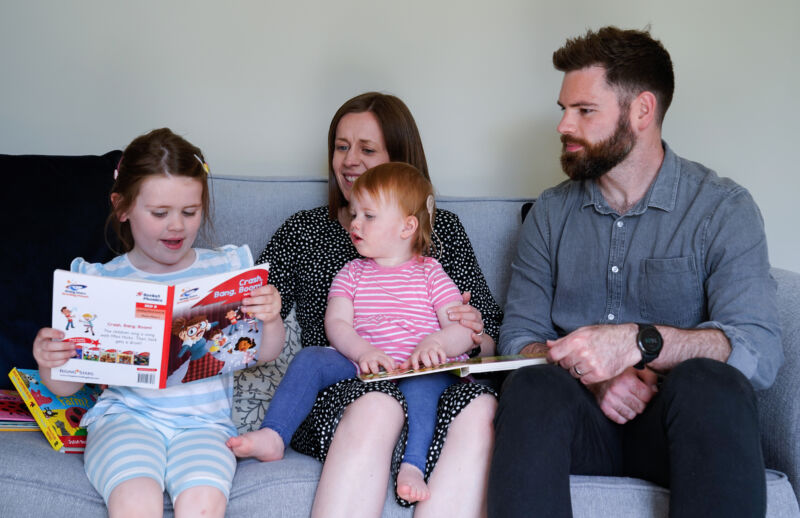
In a groundbreaking medical breakthrough, 18-month-old Opal Sandy from the UK has become the first person globally to regain hearing through gene therapy.
Born deaf due to a rare genetic disorder known as auditory neuropathy, Opal’s successful treatment at Addenbrooke’s Hospital in Cambridge marks a significant advancement in genetic interventions for hearing impairments.
Auditory neuropathy spectrum disorder disrupts the transmission of sound from the ear to the brain despite normal sound detection by the ear. This condition, which affects approximately one to two per 10,000 babies, can complicate diagnosis and vary over time.
The CHORD Trial: A New Approach to Hearing Loss
Initiated in last year’s May, the CHORD trial focuses on the potential of DB-OTO gene therapy in treating hearing loss associated with OTOF gene mutations. This gene is critical for producing otoferlin, a protein essential for auditory nerve communication. In Opal’s treatment, doctors injected a benign virus, AAV1, into her cochlea. This virus is designed to deliver corrective genetic material and is naturally expelled from the body post-delivery.
Remarkably, the procedure was completed under general anesthesia in less than 20 minutes, demonstrating both efficiency and minimal invasiveness. Opal received the gene therapy in her left ear while also having a cochlear implant installed in the same ear to ensure comprehensive treatment coverage. This approach minimizes potential side effects by localizing the treatment to the necessary area without affecting the rest of the body.
The impact of the therapy was observable within four weeks as Opal began to respond to auditory stimuli with the cochlear implant turned off. Continued improvements were documented over six months, culminating in her ability to hear and respond to soft sounds like whispers.
Implications for Future Treatments
The trial, involving only three children including Opal, tests varying doses of the gene therapy, focusing on safety and effectiveness. The initial results have paved the way for subsequent phases that will explore increased dosages and bilateral treatments. These developments are supported by experts like Manohar Bance and Richard Brown, who emphasize the reduced risk and targeted delivery of the therapy.
The phased approach includes:
- Phase 1: Patients receive a low dosage administered to one ear, assessing the initial safety and response.
- Phase 2: A higher dosage of gene therapy is applied exclusively to one ear, building on the safety data gathered from the initial phase.
- Phase 3: Gene therapy is administered to both ears using a dosage that has been carefully selected for its safety and efficacy.
Follow-up evaluations will be conducted over a five-year period for all enrolled patients.
For Opal’s parents, Jo and James Sandy, the success of the therapy brings immense relief and joy. They express hope that this advancement will benefit other families facing similar challenges, especially in everyday situations where conventional hearing aids like cochlear implants are impractical.
Related News:
Featured Image courtesy of Andrew Matthews/PA Images via Getty Images
